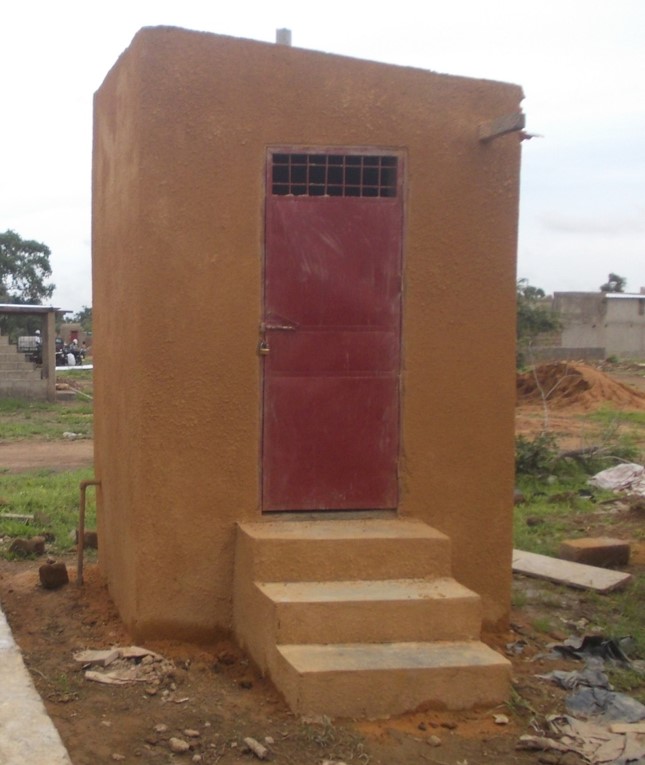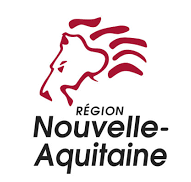

Nakanbé Basin © Nakanbé Water Agency
LOCAL CONTEXT AND ISSUES:
Burkina Faso is located in the Sudano-Sahel region, characterised by variable rainfall (intra and inter-annual) and a considerable level of evaporation that directly impacts the water cycle and runoff. The area is also highly subject to climate change, with a tendency to aridification: increase in average temperatures, decrease in rainfall. These factors concerning the Sahelian region are combined with the impacts of high demographic growth, and an increasingly poor and vulnerable population. The financial situation of households in rural areas often depends on the production of their crops or livestock (and sometimes fishing), subject to desertification and deteriorating soil quality that is accelerated by increasingly intense, repeated climate events in the Sahel:
- Loss of arable land
- Fewer boreholes and drinking points
- Impoverished arable land (less fertile)
- Deterioration of environments due to uncontrolled use of pesticides

Ecosan Latrines © Koassanga Association
The resources and means of production of rural inhabitants make it difficult to combine attempts to ensure food security with the urgent necessity to protect water resources and connected ecosystems. The remaining fertile arable land is made up of wetlands comprising lowlands and riverbanks that are progressively being colonised and degraded by inhabitants. This human behaviour counteracts policies to protect the environment and combat climate change. In this situation, it is urgent to promote farming practices that guarantee food security while respecting the environment.
Direct and indirect objectives of the project:
- Agriculture: Increase land production and profitability and improve its usage (e.g. using sanitation by-products) and provide local inhabitants with adequate equipment and training.
- Sanitation: Reduce potential contamination of water destined for human consumption (faecal by improving sanitation systems, chemical by employing natural pesticides), improve access to sanitation to reduce tropical diseases (malaria, dengue fever) and ensure a balanced diet with farm produce.
- Water supply: Pursue sustainable mobilisation and use of water resources by promoting water-saving practices and avoiding all types of pollution, reduce the quantities needed for agricultural production, improve water retention capacities.
- Ecosystems: Preserve the water-soil-fauna-flora system to continue benefitting from the ecosystem services that they provide.
- Energy: Develop energy self-sufficiency by recovering agricultural waste to use as fuel.
- Climate: Set up a system to share risks related to farm production, rehabilitate land in the process of desertification to combat climate change.
- Pedology: Reverse the trend to make soil rich and fertile again; stop erosion and deterioration.
- Society and policy: Submit technologies and knowhow to local people to obtain their acceptance, adoption, integration and follow-up in local programmes.
- Society and territory: Limit the exodus of young people to towns and other countries.
PROJECT GOALS:
The aim of the incubation project is to foster multiple operations to adapt farming production methods and set up new sanitation methods adapted to climate change through good local practices. This adaptation will lead to improved access to sanitation and food security, and efficient management of farming practices based on an agroecology model.
SDGs TARGETED BY THE PROJECT:
CHALLENGES FACING THE PROJECT:
Wetlands/riverbanks – Availability of arable land – Deterioration and overexploitation of land – Organisation of agricultural activities – Availability of infrastructure and investment – Access to and management of durable sanitation facilities – Synergy between urban and rural areas
SECTORS CONCERNED:
Agriculture - Energy – Biodiversity – Circular economy – Food security – Energy security - Health – Water supply and sanitation – Risk management (erosion, drought, flooding) - Protection and management of water and land ecosystems – User resilience
EXPECTED OUTCOMES:
Nature-based solutions:
- Improved quality of water and land resources: use of natural fertilizers and local biological methods as alternatives to chemical pesticides
- Erosion control: regulation of wetlands
- Biological, chemical and physical restoration of soils: implementation of Integrated Soil Fertility Management (ISFM)
- Promotion of techniques and crops suitable for the current climate
- Production of natural agricultural fertilizers: EcoSan latrines
Agroecology:
- Agroecological techniques applied on a wide scale
- Amenities and facilities for developing the local farming industry
- Crop combination
- Micro fertilisation
New Information and Communication Technologies (NICT):
- Decision-aid tools: knowledge-building and decision-making with climate and meteorological services
Sanitation engineering:
- Access to sanitation and decrease in water-borne diseases: construction and use of EcoSan latrines
Energy engineering:
- Popularisation of biocarbon production techniques
Modernisation and reinforcement of governance:
- Network of coordinators and trainers
- Exchanges between users and with institutional representatives
Set-up of long-term finance mechanisms:
- Financial autonomy in rural areas
- Income generating activities (IGAs) for farming, energy, sanitation by-products
Capacity and knowledge building:
- Capacity-building
- Diversification of activities depending on climate
Other:
- Awareness of hygiene rules (hand washing)
PROJECT STAKEHOLDERS:
Stakeholders involved:
Local inhabitants – Institutional stakeholders – Technical stakeholders
Project leaders:
Nakanbé Water Agency, others to be identified
Project operators:
Koassanga Association, Local Water Committees, other local partners of the association
Technical partners:
Nouvelle Aquitaine Region (RNA) and its technical unit on the Central Plateau – PS-Eau / ACTEA – General Directorate of Sanitation – Regional Directorate of Sanitation – Regional Directorate of Agriculture – Central Plateau and Centre South Regional Council
Funder of the incubation process:
Loire-Bretagne Water Agency – Rhône-Méditerranée-Corse Water Agency – Nouvelle-Aquitaine Region
Other:
Bureau National des Sols (BUNASOL), Centre d’Analyses des Politiques Economiques et Sociales (CAPES), ICI engineering consultants, FAO and the World Bank for validation of steps, in order to ensure institutional support
ESTIMATED COST OF PROJECTS IDENTIFIED FOR INCUBATION:
>1 million EUR
SHORT-TERM ACTION (3 YEARS)
- ISFM
- EcoSan latrines
- Soil mapping
- Agroecological techniques
- Regulation of lowlands
- Implementation of techniques to preserve water and soil (stone barriers, small dykes, small filtering dykes, terraces, half-moon technique, agroforestry, dune fixation, etc.)
- New water source (rural reservoir)
- Decision-aid tools: climate and meteorological services
- Early warning systems for efficient management of variable climate change
- Re-vegetation
- Hygiene and sanitation
- Good farming practices
- Local economic model that is durable and replicable: commercialisation of natural fertilizers / sale of organic produce (in Ouagadougou, etc.)
LONG-TERM ACTION (10 YEARS)
- Central network of users and institutional stakeholders
- Network of coordinators and trainers
- Local and regional exchanges
- Regulations and control of agricultural activity
- Compensation for market gardeners in easement strips (“ecological label”)
- Multi-stakeholder committee
- Production of a local adaptation plan complying with existing national and local plans
- Creation of an ecological label
- Establishment of agricultural insurance




